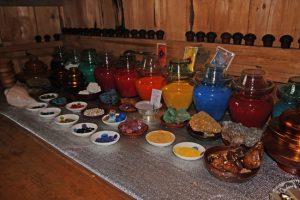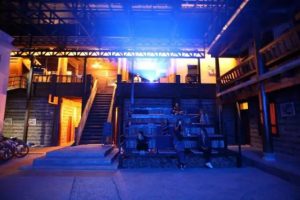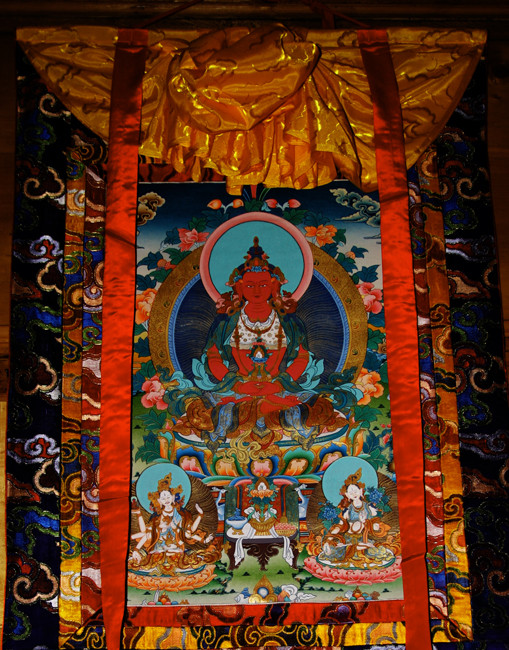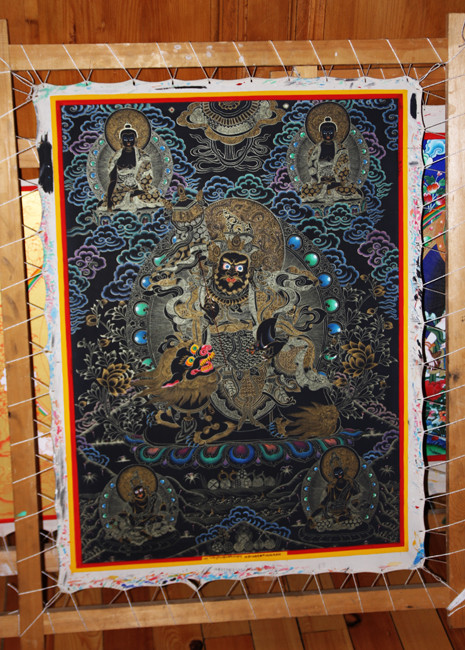Thangka Center in Shangri-La

Attraction Overview
Thangka Center is opened by the Gyalthang Association of Culture Preservation to learn about the ancient Tibetan art of Thangka painting, and contribute in preserving the local Tibetan culture.
Chinese Name: 香格里拉唐卡中心(Pinyin: Tangka Zhongxin)
Location: No.31, Jinlong Street, Dukezong Ancient Town, Jianyang Town, Shangrila City, Yunnan
About Thangka
Thangka is a complicated, composite three-dimensional object consisting of: a picture panel which is painted or embroidered, a textile mounting; and one or more of the following: a silk cover, leather corners, wooden dowels at the top and bottom and metal or wooden decorative knobs on the bottom dowel. It serve as important teaching tools depicting the life of the Buddha, various influential lamas and other deities and bodhisattvas.

About the Center
Thangka Center is opened by the Gyalthang Association of Culture Preservation to learn about the ancient Tibetan art of Thangka painting, contribute in preserving the local Tibetan culture. Established in 2006, the non-governmental and non-profit association is dedicated to protecting and inheriting the ethnic Tibetan culture.
The center, which started with three students at the very beginning, currently has about 20 students aged 10-25, all of whom are Tibetans from Tibet and Tibetan-inhabited areas in other parts of China. They not only study Thangka painting skills, but also learn Tibetan, Han and English languages, and most importantly, the Tibetan culture. The center provides totally free education during the four-year study for the students.
About the Founder
Dakpa Kelden is a principal founder of the Thangka Center and the Shangri-la Association of Cultural Preservation in Shangri-la county, Deqen Tibetan Autonomous Prefecture in southwest China’s Yunnan province. Dakpa Kelden used to be a monk when young and once studied tourism management in Austria. Together with a group of volunteers, he founded the Gyalthang Association of Culture Preservation (known as Thangka Centre) with the aim of giving young people the opportunity to study Tibetan arts. He can speak fluent Tibetan, Han, English and Hindu languages.
Apart from government’s support, the founder also called for attention of the international community in carrying forward the Tibetan culture, an integral part of the splendid Chinese culture.

Cultural Meaning
Thangka has been increasingly becoming a handicraft, thus losing its cultural connotation. It is expensive only for its valued pigments and workmanship, not for its cultural meaning. Nowadays, lots of young people consider culture as a certain object, for example, a piece of Thangka. While an object is only the carrier of the culture, not the culture itself. Therefore, Tibetan culture is more important than the Thangka painting skills.
Learning Programs
Luckily the tourists can also join the center to learn the Thangka painting, chanting, Tibetan language, calligraphy, etc. Besides, you can also experience the homestays in Trinyi village nearby.



 7 Days GolfingTour
7 Days GolfingTour
 8 Days Group Tour
8 Days Group Tour
 8 Days Yunnan Tour
8 Days Yunnan Tour
 7 Days Shangri La Hiking
7 Days Shangri La Hiking
 11 Days Yunnan Tour
11 Days Yunnan Tour
 6 Days Yuanyang Terraces
6 Days Yuanyang Terraces
 11 Days Yunnan Tour
11 Days Yunnan Tour
 8 Days South Yunnan
8 Days South Yunnan
 7 Days Tea Tour
7 Days Tea Tour
 8 Days Muslim Tour
8 Days Muslim Tour
 12 Days Self-Driving
12 Days Self-Driving
 4 Days Haba Climbing
4 Days Haba Climbing
 Tiger Leaping Gorge
Tiger Leaping Gorge
 Stone Forest
Stone Forest
 Yunnan-Tibet
Yunnan-Tibet
 Hani Rice Terraces
Hani Rice Terraces
 Kunming
Kunming
 Lijiang
Lijiang
 Shangri-la
Shangri-la
 Dali
Dali
 XishuangBanna
XishuangBanna
 Honghe
Honghe
 Kunming
Kunming
 Lijiang
Lijiang
 Shangri-la
Shangri-la
 Yuanyang Rice Terraces
Yuanyang Rice Terraces
 Nujiang
Nujiang
 XishuangBanna
XishuangBanna
 Spring City Golf
Spring City Golf
 Snow Mountain Golf
Snow Mountain Golf
 Stone Mountain Golf
Stone Mountain Golf













